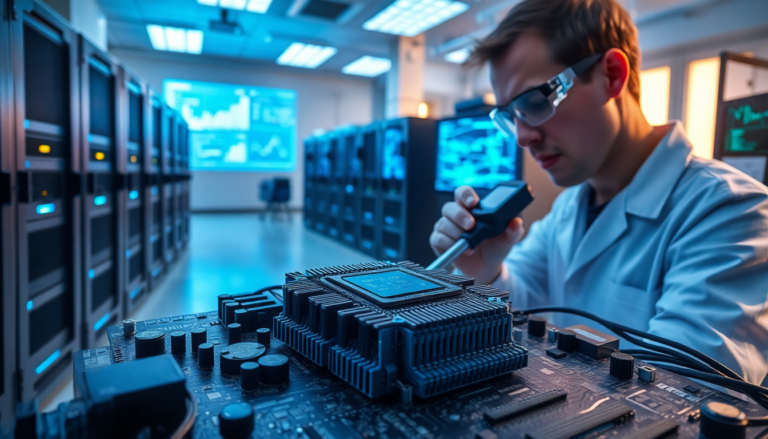Argomenti trattati
Neural processing units (NPUs), often known as AI accelerators or deep learning processors, are a fascinating breed of hardware that significantly boost the performance of artificial intelligence (AI) and machine learning applications. But what exactly do they do? These processors are crucial for executing complex algorithms, particularly those tied to artificial neural networks and computer vision, enabling faster and more efficient data processing. In a world where AI is becoming increasingly prevalent, understanding how NPUs work and their applications is vital for anyone eager to grasp the future of technology.
The Architecture and Functionality of NPUs
So, how do NPUs actually function? They’re designed to optimize both the training and inference phases of AI models. In simple terms, inference is all about running already trained models, while training involves creating these models in the first place. You’ll find NPUs in action across various fields, from robotics to the Internet of Things (IoT), and they excel in data-heavy tasks. Most NPUs utilize manycore or spatial designs, emphasizing low-precision arithmetic and innovative dataflow architectures. This setup not only improves efficiency but also manages the enormous computational load typical of AI tasks, which can involve billions of operations.
As we step into 2024, the tech landscape is highlighted by impressive chips like the H100 GPU, featuring tens of billions of MOSFETs. This showcases the remarkable advancements in NPU technology. Such high levels of integration not only boost performance but also underline the rising demand for efficient processing capabilities, especially in data centers and cloud computing environments.
Applications of NPUs in Consumer Devices
So where do we see NPUs in our everyday lives? They’re making waves in a variety of mobile devices, including popular smartphones from brands like Apple, Huawei, and Google. These devices harness AI accelerators for tasks like facial recognition and real-time image processing, which significantly enhance user experiences. For instance, Apple’s iPhones utilize their proprietary NPU technology to optimize camera performance and on-device machine learning tasks. Isn’t it amazing how these tiny processors can make such a big difference?
Moreover, NPUs are becoming increasingly integrated into mainstream computer processors. Companies such as Intel and AMD have started incorporating versatile processing units (VPUs) into their latest CPU models, allowing for accelerated inference in applications like computer vision and deep learning. This trend highlights a shift towards embedding AI capabilities directly into consumer hardware, making sophisticated AI functionalities more accessible to all of us.
The Future of NPU Technology
What does the future hold for NPUs? It looks quite promising! Ongoing technological advancements are expected to produce even more powerful and efficient processors. One significant trend is the move towards lower-bitwidth operations, like INT4 and FP8, aimed at optimizing performance while reducing power consumption. Metrics such as trillions of operations per second (TOPS) will remain crucial for gauging these processors’ capabilities, though it’s essential to understand the nature of these operations to evaluate their effectiveness accurately.
In the ever-evolving realm of cloud computing, NPUs are carving out a vital niche. Companies like Google and Amazon are deploying specialized tensor processing units (TPUs) to enhance their AI services. As this technology matures and the appetite for AI-driven applications grows, it seems likely that NPUs will become essential components of both consumer and enterprise technology landscapes, paving the way for innovations we have yet to dream of. Are you ready to embrace the future of AI?

